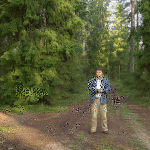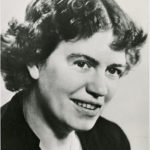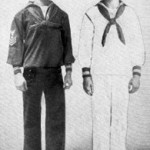
February 8, 2017
44 Takeaways from the San Diego Writers Conference
 A few weeks ago, I attended the San Diego Writers Conference, sponsored annually by San Diego State University. It was my second time at this event (here are my takeaways from last year’s event) so I knew it would be cerebral, well-worth the time and money, leave me motivated to get back into the trenches with my keyboard and red pencil, and introduce me to lots of like-minded writerly folks. Keynote speakers included Jonathan Maberry, R.L. Stine, Sherrilyn Kenyon, and J.A. Jance. I can’t believe how entertaining these folks were while imparting some amazing nuggets that I will likely never forget.
A few weeks ago, I attended the San Diego Writers Conference, sponsored annually by San Diego State University. It was my second time at this event (here are my takeaways from last year’s event) so I knew it would be cerebral, well-worth the time and money, leave me motivated to get back into the trenches with my keyboard and red pencil, and introduce me to lots of like-minded writerly folks. Keynote speakers included Jonathan Maberry, R.L. Stine, Sherrilyn Kenyon, and J.A. Jance. I can’t believe how entertaining these folks were while imparting some amazing nuggets that I will likely never forget.
Here are my top 44 takeaways:
- Jonathan Maberry writes 4000 words a day, five days a week. Here are a few tips from him:
- He doesn’t believe in writer’s block. It usually means you’re facing a challenge.
- He writes in a bunch of genres. Doesn’t see any problem with that and wants to try them all.
- Audio books in 2015 were worth $1.7 billion.
- Use social media to encourage efriends.
- Focus on just a few social media platforms. Pick the ones that work best for you (I heard this from multiple people).
- Champion and promote other people’s stuff.
- Bob Mayer says end matter (the stuff you put after the end of your story) can only be 5% of the book. More from Bob Mayer:
- Half million titles were uploaded to Kindle in 2016.
- Self-pub authors make more than traditionally pubbed authors.
- Don’t be an a**hole! Be polite, helpful, and convivial to online friends and acquaintances (I heard this from at least three presenters).
- Have a good reason to break a rule.
- Tips from JLStine (the author of the Goosebumps series):

- There’s no good answer to the question ‘where do you get your ideas’. Start with a title and let it lead you to an idea.
- If you get bogged down in the story and can’t get to the ending, start with the ending.
- Always say yes to every opportunity (having to do with marketing your books).
- He outlines his books first. He thinks that allows him to write more books.
- He does no research for his books. He makes everything up.
- Twitter is a great way to stay in touch with readers.
- Social media provides good marketing tools.
- Justin Sloan’s tips (this guy writes multiple books a year–he was amazing):
- It takes a really long time to get traditionally published.
- Your goals will help you decide which way to go. Traditional is better for winning awards. Self-pub better for quick publishing.
- Bookbub is the gold standard for promoting your book.
- What you get out of traditional publisher is heavily dependent upon the agent you have.
- The average self-pubbed author sells six books a year.
- What are called ‘Whale readers’ read several books a day.
- Offer your first book free to get readers to buy the next.
- Use Instafreebie to promote your book. You’ll get everyone’s email address when they sign up for your free book.
- Add an offer at the end of your book, such as a free story if they subscribe to your newsletter.
- Have a thirty-second elevator pitch. That’s five to eight sentences. Include who you are, what your book is about, what you want people to do about your book.
- Have ten questions about your book that you are prepared to answer.
- Have a short and long bio.
- Develop three to five pitches.

- Be quotable. Have quick blurbs that listeners find quotable.
- Give your media appearance a second life on social media.
- You must become a performer once your book is written.
- A book trailer is 90 seconds and could be as simple as you answering the ten questions.
- Tips from Penny Sansevieri:
- 95% of book sales are from personal recommendation.
- Number one thing readers want to do when they finish a book is to engage with the audience.
- Photofunia.com–add effects to pictures to make your marketing pop
- Befunky.com–more photo editing tools for your marketing efforts.
- You need seven touches to sell a customer.
- You can sell on Pinterest now.
- The key to writing a non-fiction book is to make it entertaining.
- Narrative nonfiction probably succeeds or fails based on writer skills.
Overall, this conference gets an A. I can’t think of anything I didn’t like and will probably attend next year. Who’s with me?
More on writing advice:
How to Write Like a Pulitzer Prize Winner
15 Traits Critical to a Successful Writer
8 Things Writers Can Do No One Else Can
Jacqui Murray is the author of the popular Building a Midshipman, the story of her daughter’s journey from high school to United States Naval Academy, and the thriller, To Hunt a Sub. She is also the author/editor of over a hundred books on integrating tech into education, adjunct professor of technology in education, webmaster for four blogs, an Amazon Vine Voice book reviewer, a columnist for TeachHUB, monthly contributor to Today’s Author and a freelance journalist on tech ed topics. You can find her books at her publisher’s website, Structured Learning. The sequel to To Hunt a Sub, Twenty-four Days, is scheduled for Summer, 2017. Click to follow its progress.






